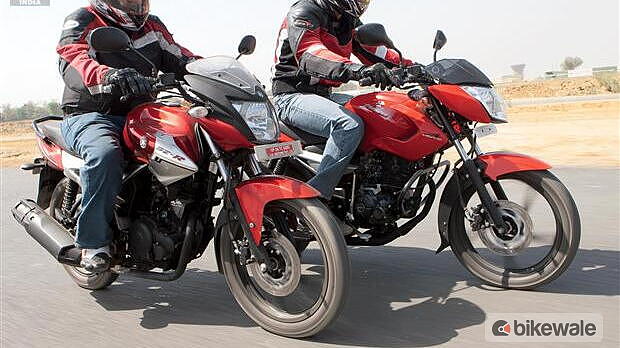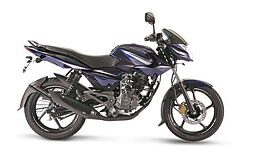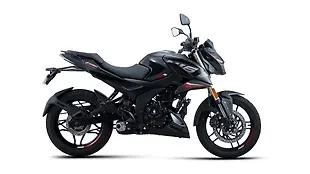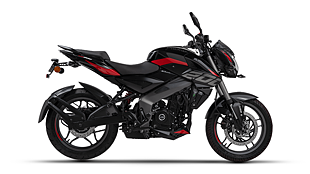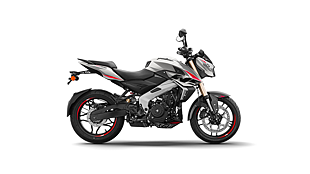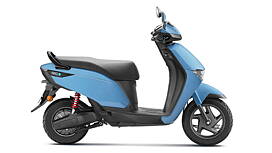Introduction

Is a bigger engine a sure fire way to judge how good a motorcycle is? We think not.
The other day a friend called up asking “Which 150 should I buy?” The Yamaha FZ came to mind. It had won our comparison road test twice and is one of the better looking motorcycles around. Obviously that couldn’t have been the end of it. “Too pricey” he said. “They all are similarly priced,” I came back. So it was evident that a regular 150 wouldn’t do. So I recommended the other Yamaha, the SZ. It is a ‘150’, well priced and looks good. Yamaha just gave it a disc brake too. But, he seemed a little confused because for about the same money he could also buy the Pulsar 135LS. Now it might not be a 150 but packs in superb performance. Hmmm…good thought that, the 135LS does look good, has a great engine and is quite efficient too. It’s time then to finally settle the debate and in turn help out many like our aforementioned friend.
Both the Bajaj and the Yamaha are good looking motorcycles. The smallest of the Pulsars is a sharp looking thing. The motorcycle has been given enough attention throughout and although there are a few bits we didn’t like, the overall effect is quite likeable. The edgy looking headlamp merges well with the angular tank extensions on the shapely tank. The jagged look continues on the centre panel, which imitates the bigger Pulsars and through to the long tail section ending in the LED tail lamps and split grab rail. The motorcycle was recently given an all-black treatment for the mechanical bits and the hideous full cover on the rear tyre was replaced by a new two piece unit. We still don’t like it very much, but it is way better than the older one.
The SZ-R is the third motorcycle in the SZ range. Yamaha has given it a mild touch up as regards looks. The leaf like tank extensions from the SZ-X are gone and in come more pointed slim ones that look better thanks to the contrasting colours. The middle section too has been painted silver. The rest of the motorcycle runs the same all-black treatment. Also making an appearance is the disc brake we missed. Along with that it also gets bar end weights and a tachometer. It sadly gets some downmarket looking things like the tubular grab rail and an archaic fuel filler cap.
Exterior

The Yamaha still lacks the equipment that the Pulsar gets, though. The clocks are analogue and it doesn’t get a trip setting either. Frankly, they would look better on a commuter. The Pulsar on the other hand gets digital clocks, clip on handlebars and though only a feel good thing; backlit switchgear as well.
We just don’t like the heel-toe shifter which isn’t rubberised. The gearbox on the Bajaj is one of the lightest we have come across from the manufacturer. Although not as slick as the Yamaha, it too slots in well though feels a tad notchy.
It’s the Yamaha that one can ride sedately. It is instantly comfortable, that big single piece seat is like a sofa with good support. The ride quality is also on the softer side which doesn’t feel obtrusive and only the very harsh surfaces fi lter through though without being interfering. The riding position too is relaxing. The pegs are just enough rear set to give a sporty stance yet not having the rider’s weight completely on the handlebars. The big handlebar means that there is enough leverage to be had.

The Bajaj on the other hand features clip-on handlebars which though tall, are not wide enough. The riding position too seems to be stuck in a limbo. It’s not a proper commuter nor properly front biased and sporty. The culprits here are the pegs which have been placed forward and the perch which has the rider sliding ahead all the time. Combined with short handlebars, it makes for a rather odd feeling while riding. The ride quality too is comparatively stiffer. On surfaces where you don’t feel a thing on the SZ-R, the Pulsar lets in just enough.
The SZ-R finally gets the much awaited disc brakes. This hasn’t changed things much though as is revealed by the braking figures we got. Though better than the drum brake versions, the difference isn’t substantial. Brake feel though has improved. We blame the tyres on the SZ-R for this. The best they did under hard braking was lock up. Also, the rear brake on the test vehicle wasn’t in the best shape. The Pulsar’s MRFs though are one of the best in the country and help bring it to a halt in quick time.
Engine

Pulsar 135 LS -The 4-valve high revving engine sounds great too and comes into its own once revving above 4000rpm.
The hoot in this comparison is the Pulsar. The buzzy engine with a four-valve head has the performance to match the looks. This is one motorcycle you can’t 51.3kmplreally ride sedately. Making all its power in the upper reaches of the rev range it feels quite happy to be revved hard all the way to the 10000rpm red line. It gets vibey after 5000rpm but smoothens out after 6500. Also, it sounds great inside the helmet once you open the taps.

Yamaha SZ-R -The engine is the same one as on the more expensive FZ, but makes less power and is tuned more for efficiency.
The Yamaha on the other hand is more refined and feels mature. It too revs to the redline without much effort and is vibe free to boot. The engine is quite torquey too and pulls easily in all gears. A look at the roll-on figures confirms that. The gearbox too is quite slick and slots in neatly and is a treat to use.
Dimension
Pulsar 135 LS (mm) |
|
|
|
|
Yamaha SZ-R (mm) |
|
|
|
|
Gallery
1/8
Double Tap to Zoom








